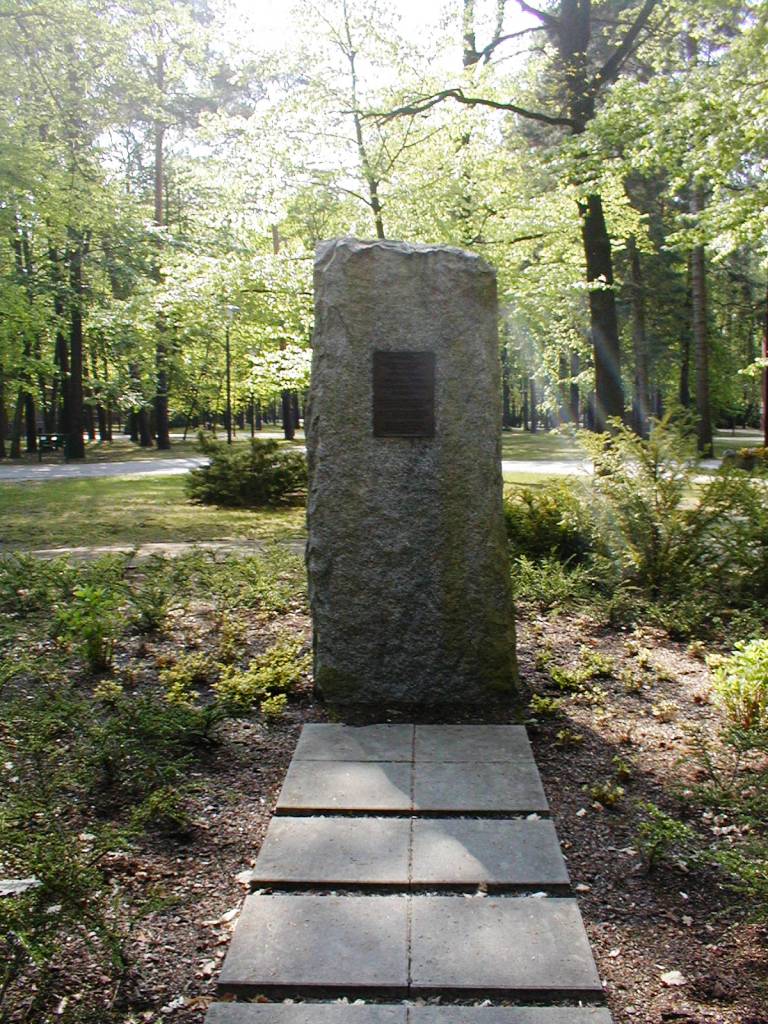
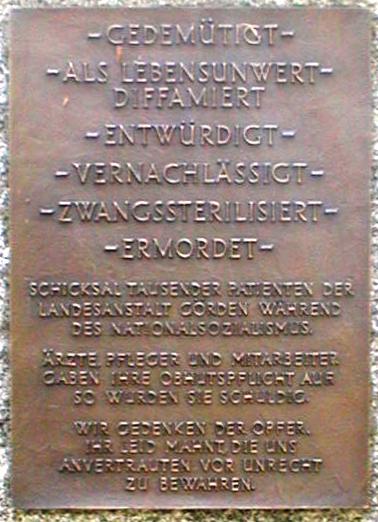
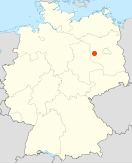
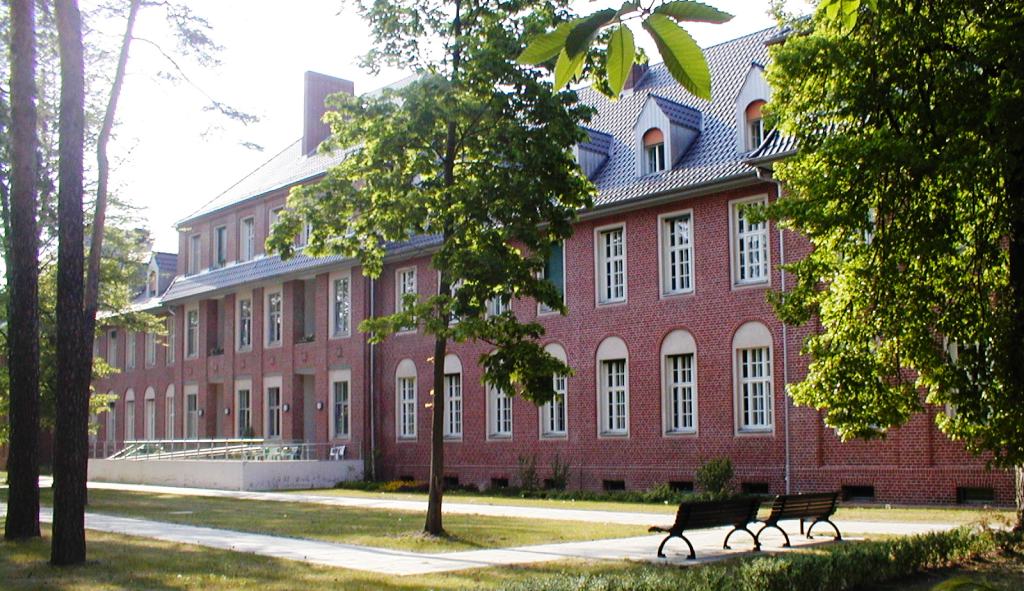
 |
 |
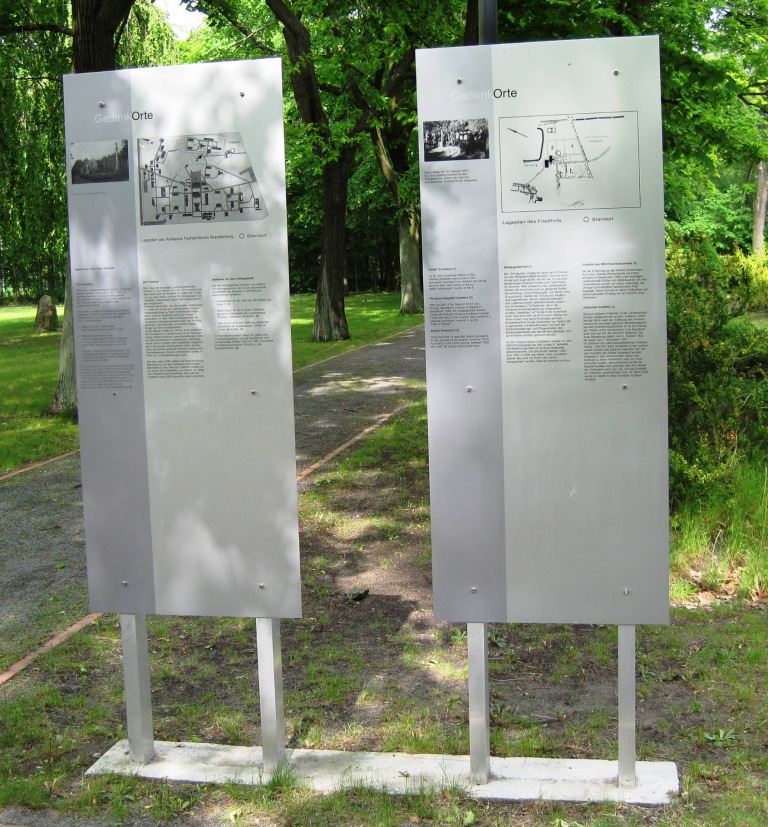 |
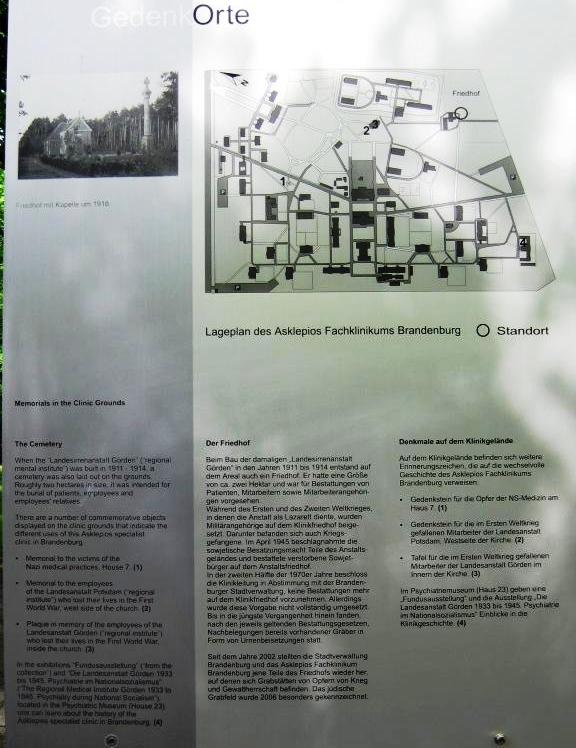 |
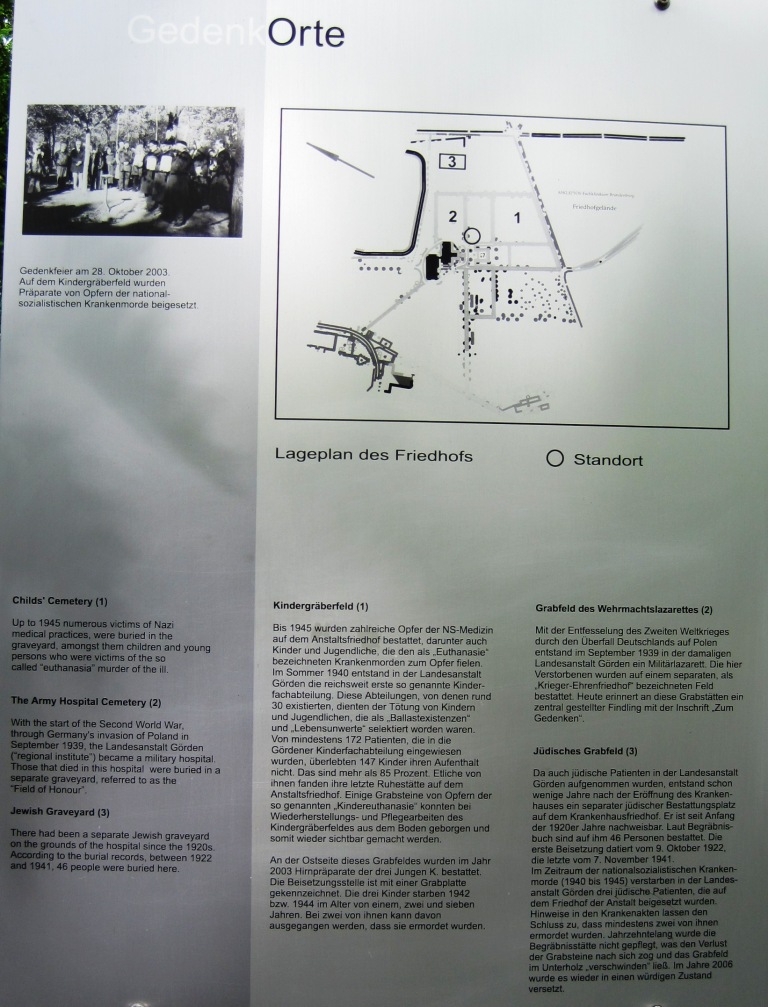 |
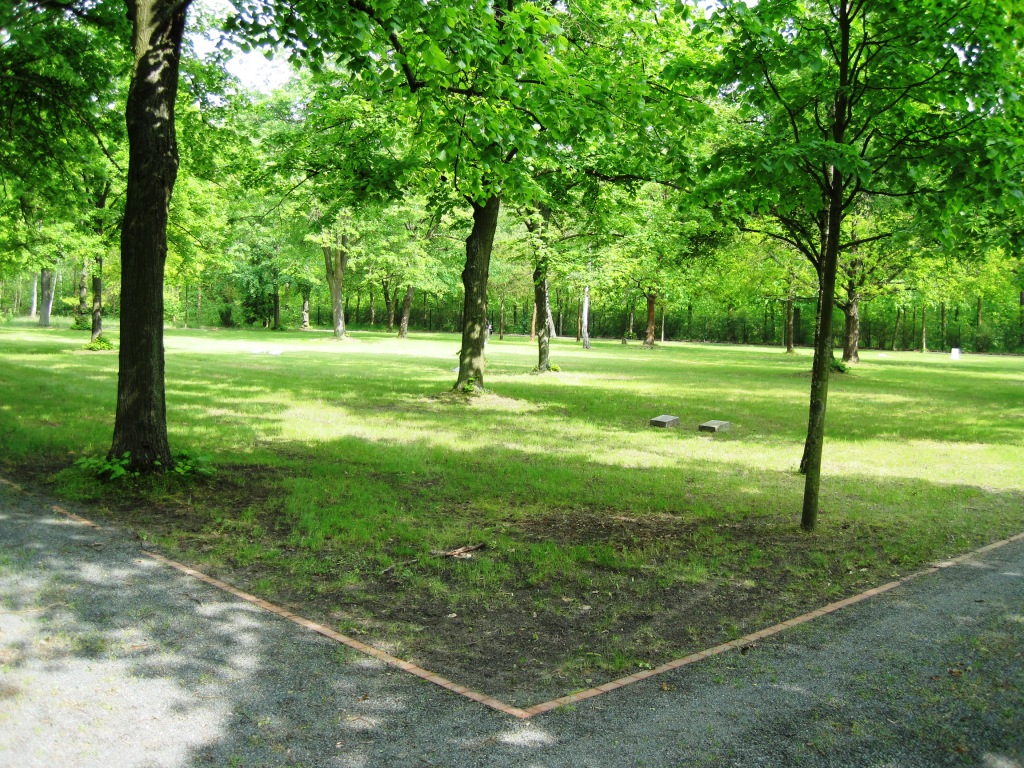 |
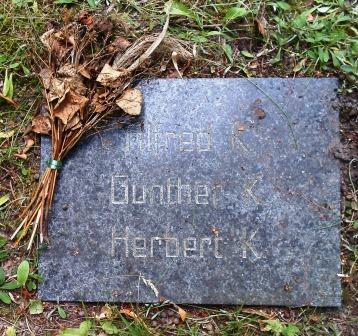 |
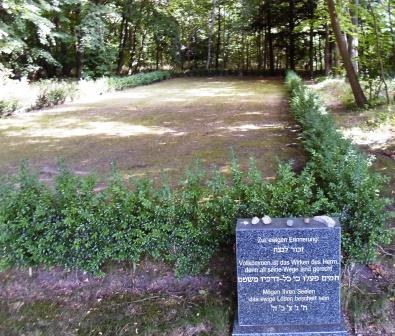 |
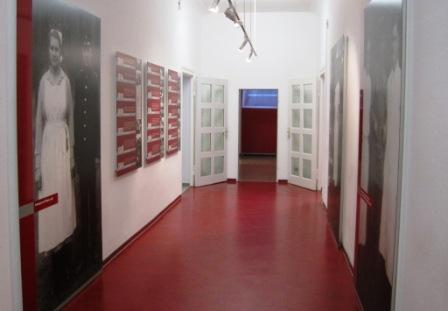 |
The entrance provides a history of
the institution, with pictures and text. |
|
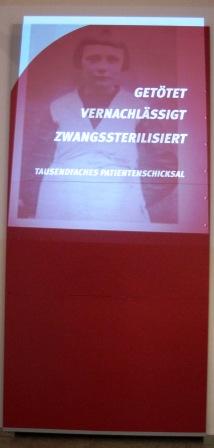 |
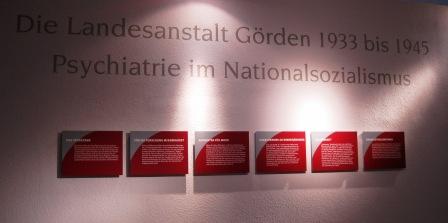 |
In the small room ahead a projector
projects images of victims, with the superimposed text "Killed.
Neglected. Compulsorily sterilized - the thousandfold fate of
patients." Small text displays on the wall address the neglect of
the victims and the lack of persecution of the perpetrators, the
abuse of patients for experiments and 'research,' the activities of
Dr. Heinze as an 'evaluator,' the types of murders of patients,
different types of NS-"euthanasia" crimes,and compulsory
sterilization. |
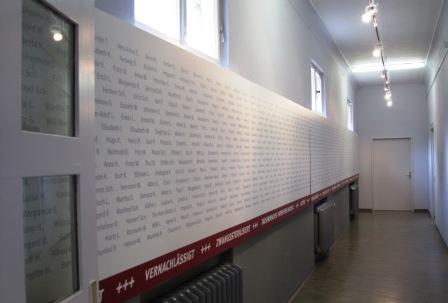 |
The hallway on the left leads to the
exhibit rooms. It contains a wall display with names of the victims. |
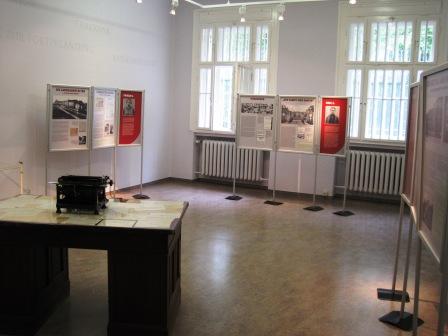 |
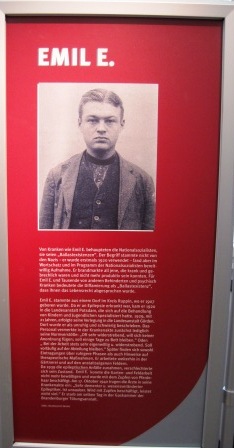 |
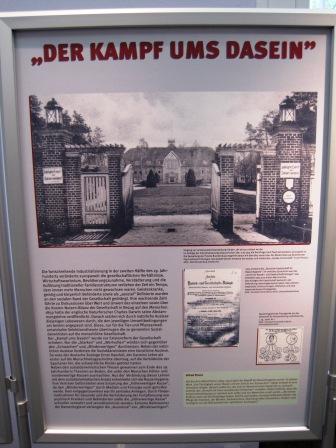 |
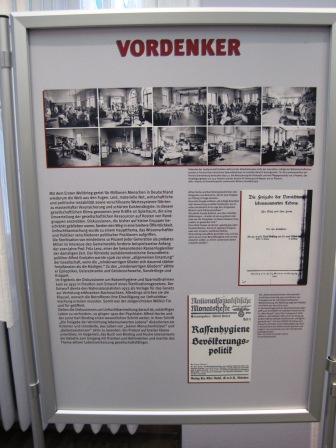 |
| Room
1 (with a desk on which various documents related to
"euthanasia" crimes can be seen) |
In the center to the right is a
display "Emil E."-alluding to a man suffering from epilepsy and
consideered a burden to society. He was a T4 gassing victim. |
In the center in the middle is a
display "Struggle for existence." It depicts the emergence of social
Darwinism as a school of thought. |
In the center to the left is a
display "Thinking ahead." It addresses the development of social
Darwinist thought in Germany in the aftermath of WWI. |
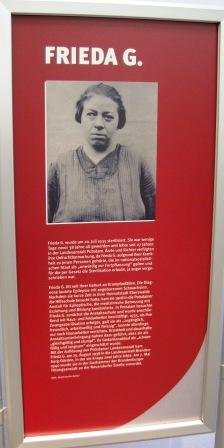 |
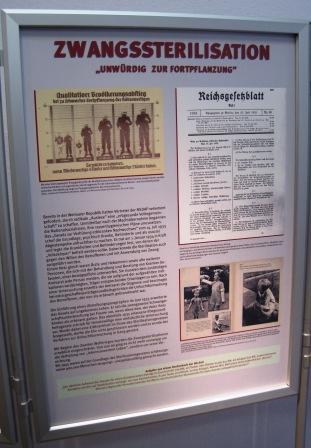 |
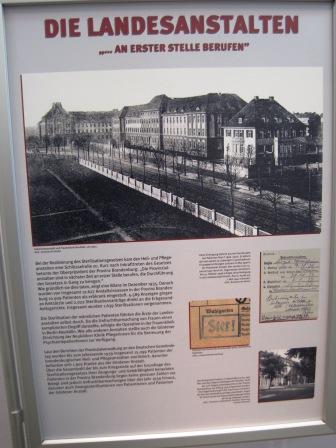 |
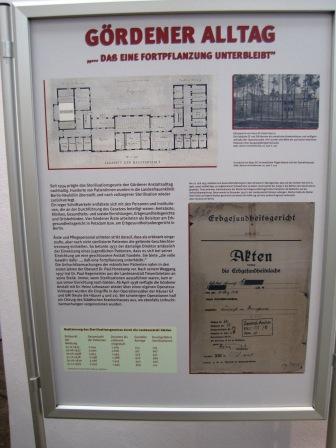 |
| On the left the rightmost display
relates to a patient "Frieda G." with epilepsy who first was
sterilized and the gassed in the T4 action. |
On the left the second display to the
right, entitled "Compulsory sterilization," addresses the compulsory
sterilization law in Nazi Germany and its procedures. |
On the left the second display on the
very left, entitled "The state facilities," shows how the state
facilities were used to implement compulsory sterilization. |
On the left the leftmost display,
entitled "Everyday life at Görden," addresses how compulsory
sterilization procedures were handled at Görden. |
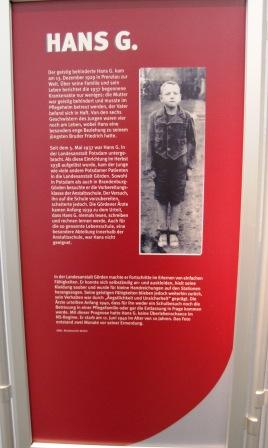 |
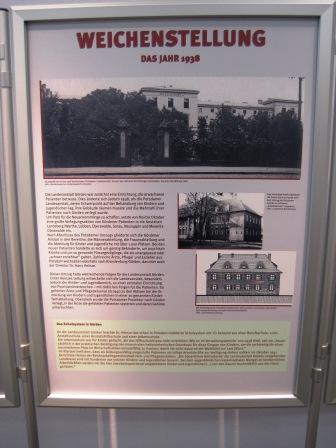 |
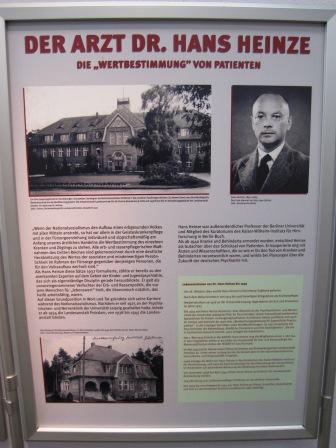 |
|
| On the right the display on the left
shows a child ("Hans G.") who was mentally disabled but began to
develop rather well. He was murdered in 1940. |
On the right the display in the
center, entitled "Setting the course," addresses how the institution
changed from being a facility treating adults to one that became a
major facility to house children and youths and murdered them as
well, under the directorship of Dr. Hans Heinze. |
On the right the rightmost display,
entitled "The physician Dr. Hans Heinze," portrays Dr. Heinze, his
philosophy on the lack of value among 'asocial personalities
and those of less worth,' and his biography. |
|
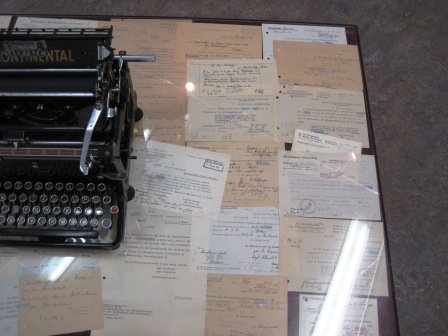 |
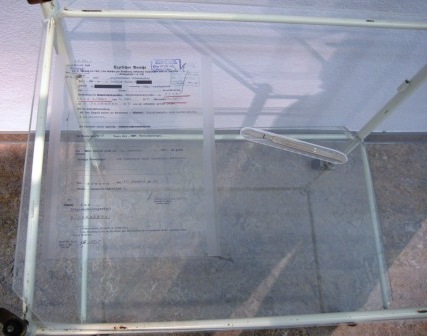 |
||
| The desk with documents. |
A table displays a medical report of
a sterilization and a scalpel. |
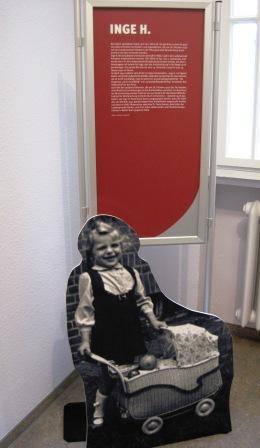 |
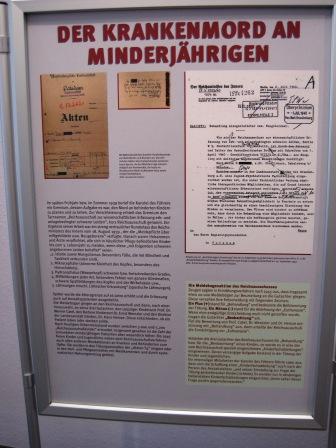 |
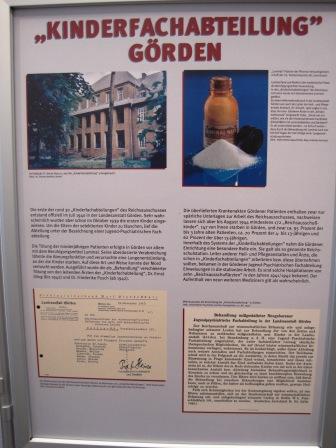 |
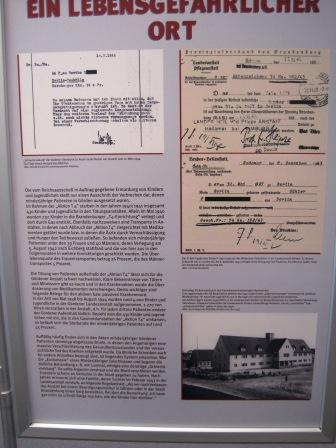 |
| Room
2 (with a cardboard display of Inge and her toy baby buggy)
- a patient who suffered from epilepsy and was gassed at Brandenburg
in 1940 at age 7 as part of the T4 program |
On the right the display to the left, entitled "The murder of patients who were minors," provides an overview of the "children's euthanasia" program and how it was implemented at Görden. | On the right the display in the
middle, entitled "'Special children's ward' Görden," details the
purpose and operation of the special children's ward, including the
number of dead children and the "training" function of the facility
for "children's euthanasia" doctors. |
On the right the display to the
right, entitled "A perilous place," notes the killing of child and
youth patients in the T4 program and 'decentralized euthanasia'
thereafter. |
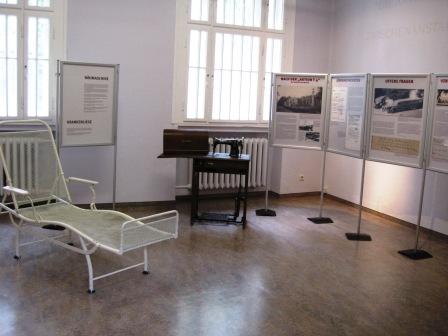 |
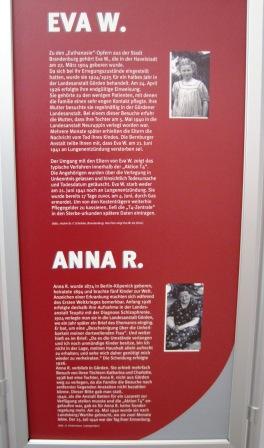 |
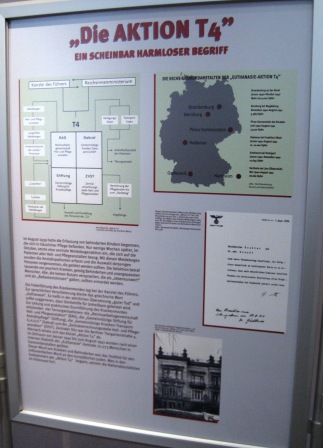 |
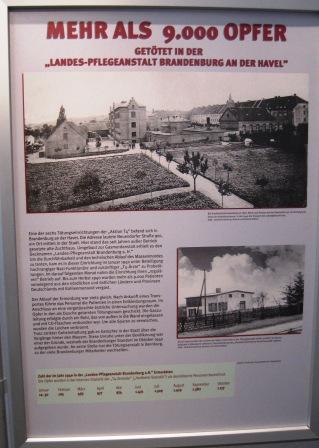 |
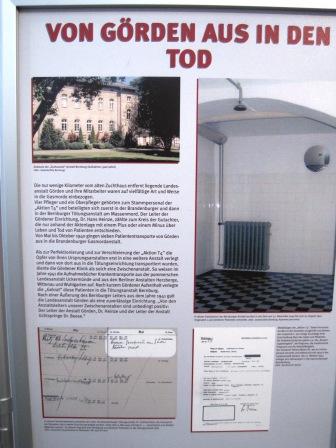 |
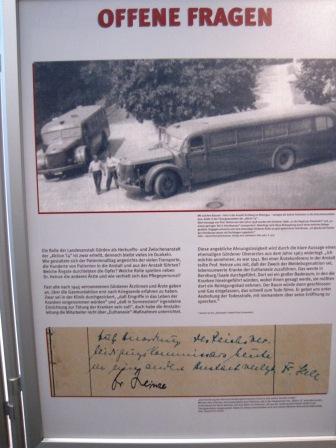 |
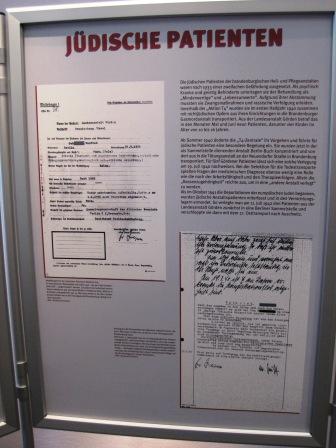 |
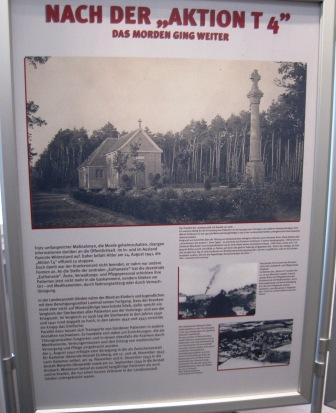 |
| Room
3 (with a bed and sewing machine) |
On the right the display to the left
relates the histories of "Eva W." and "Anna R.," who as patients
became victims to the T4 program. |
The next display, "Program T4,"
informs about this program. |
On the next display, entitled
"More than 9,000 victims," information is provided about the gas
murder facility Brandenburg/Havel |
Next, the display entitled "From
Görden to one's death" relates to the fate of the facility's
patients in the gas murder sites Brandenburg and Bernburg and the
facility's role as an intermediary facility for patients from other
institutions. |
On the right the display entitled
"Open questions" addresses what was known about the "euthanasia"
crimes in the clinic. |
On the right the display entitled
"Jewish patients," notes a change in policy in the summer of 1940,
when such patients were 'concentrated' in Berlin Buch and later sent
to Auschwitz. |
On the right the last display,
entitled "After program T4," addresses the 'decentalized euthanasia'
murders after the program T4 had ended. |
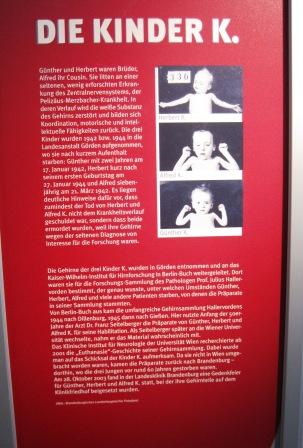 |
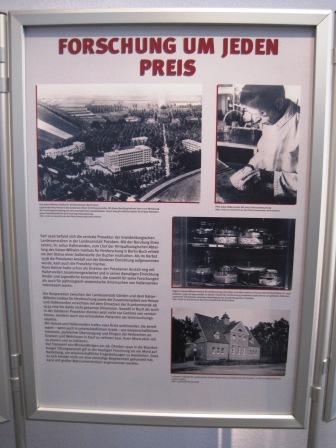 |
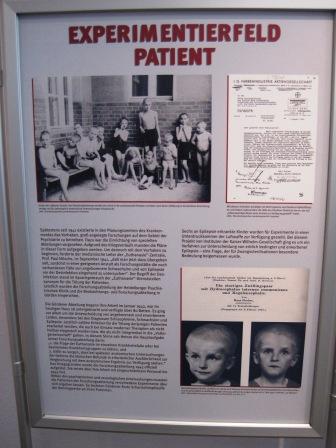 |
|||||
| On the left the rightmost display, entitled "The children K.," relates to two brothers and their cousin who were likely murdered because they suffered from a rare condition that was of interest to researchers. Their brains were used for research publications and ended up in Vienna, from which the specimens were returned and buried in the Görden cemetery in 2003 (see above). | On the left the center display,
entitled "Research at all cost," notes associations between Görden's
pathology (Prosektur) and the Kaiser-Wilhelm-Institute for Brain
Research at Berlin-Buch, and in both places brains of murdered
patients became objects of research. |
On the left the leftmost display,
entitled "Area of research: patient," alludes to the research
station that sought to find biological and heritable markers of
disability, to facilitate the future murder of patients for whom
such markers could be identified. It also addresses human
experimentation with child patients. |
|||||
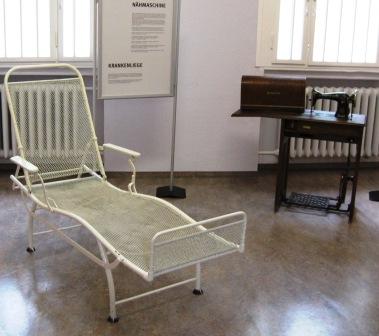 |
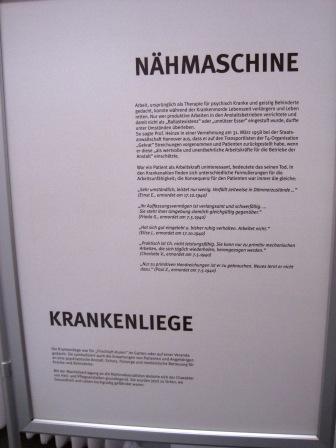 |
||||||
| Artefacts shown in room 3. |
This display notes that what used to
be innovative in psychiatry - the use of work as therapy - changed
to becoming a core marker of survival for patients: their ability to
work. |
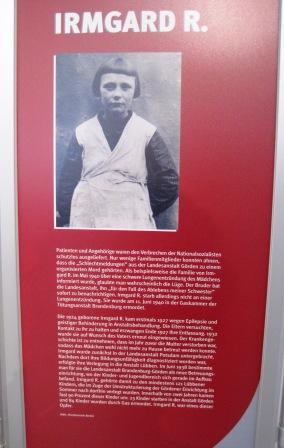 |
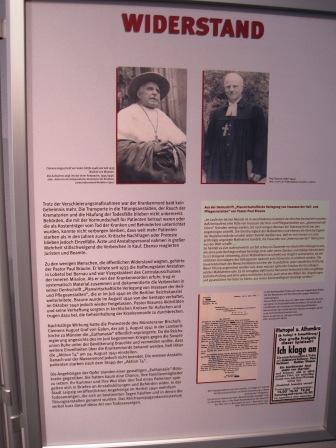 |
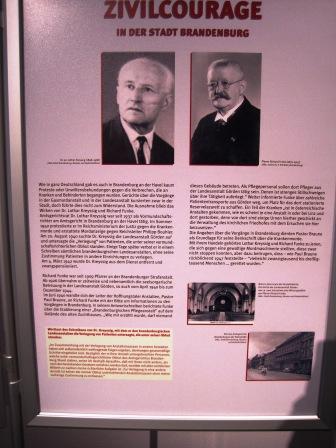 |
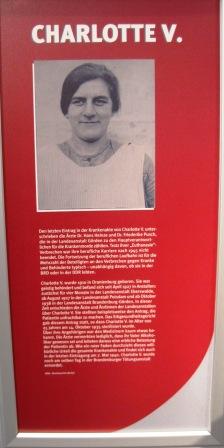 |
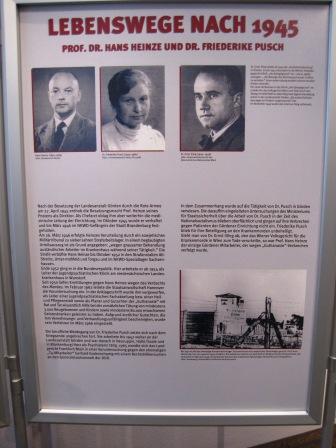 |
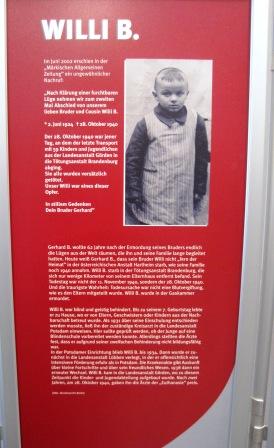 |
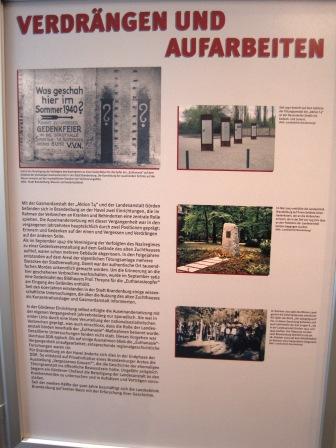 |
| Room
4 - The display on the right: "Irmgard R." was murdered in
Brandenburg in the T4 program. |
The next display, entitled
"Resistance," addresses public and private resistance against
"euthanasia." |
The display entitled "Moral courage"
in the town Brandenburg presents the cases of magistrate Lothar
Kreyssig, who protested against the murder of patients, and reverend
Richard Funke, who collected information that was used in clerical
writings against "euthanasia." |
"Charlotte V." - sterilized and
victim of T4. |
This display entitled "Careers after
1945" addresses the postwar careers of Dr. Heinze and Dr
Pusch. |
The display entitled Willi B."
portrays an obituary for Willi by his brother. It is the second,
dated 2002 - only now did the brother find out that Willi, who was
blind and mentally disabled, had been murdered in Brandenburg in the
T4 program. |
The display, entitled "Repressing [the past] and coming to terms [with it]", addresses the history of commemoration at Brandenburg/Havel, where the T4 gas murders took place, and at the facility in Görden. |
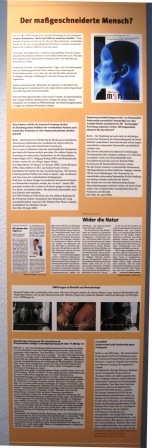 |
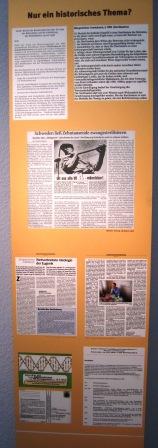 |
 |
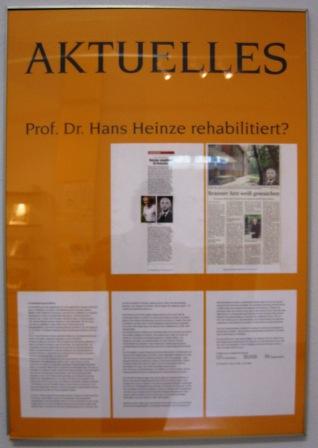 |
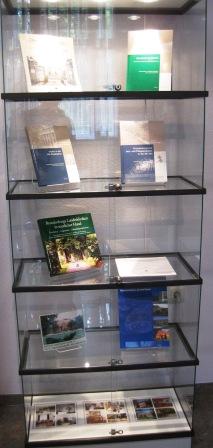 |
| In
each room there is a small display relating the materials
to current issues. Here: "Humans made to order?" |
"Merely a historical topic?" on
right-to-die and other related themes. |
"History and present" - 'euthanasia'
cases and commemoration in the press. |
Rehabilitation for Dr. Heinze? |
Room
4 has a display case with literatutre on the topic. |
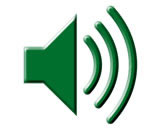 Click on sound symbol to hear a
recording of the sound of a T4 bus engine.
Click on sound symbol to hear a
recording of the sound of a T4 bus engine.Literature
Beddies, Thomas. 2004. "Kinder-'Euthanasie' in Berlin-Brandenburg." Pp. 219-48 in Dokumente zur Psychiatrie im Nationalsozialismus, edited by Thomas Beddies and Kristina Hübener. Berlin-Brandenburg: be.bra wissenschaft verlag.
-------, and Heinz-Peter Schmiedebach. 2004. "'Euthanasie'-Opfer und Versuchsobjekte: Kranke und behinderte Kinder in Berlin während des Zweiten Weltkriegs." Medizinhistorisches Journal 39(3):165-96.
-------, and Kristina Hübener. 2004. "Das Schicksal der drei 'Brüder K: Eine Dokumentation." Pp. 249-58 in Dokumente zur Psychiatrie im Nationalsozialismus, edited by Thomas Beddies and Kristina Hübener. Berlin-Brandenburg: be.bra wissenschaft verlag.
-------, Kristina Hübener, and Wolfgang Rose. 2004. "Die Forschungsabteilung in der Landesanstalt Brandenburg-Görden." Pp. 261-70 in Dokumente zur Psychiatrie im Nationalsozialismus, edited by Thomas Beddies and Kristina Hübener. Berlin-Brandenburg: be.bra wissenschaft verlag.
Benzenhöfer, Udo. 2003. "Genese und Struktur der 'NS-Kinder- und Jugendlicheneuthanasie.'" Monatsschrift für Kinderheilkunde 151: 1012-1019.-------. 2008. Der
Fall Leipzig Leipzig (alias Fall "Kind Knauer") und die Planung der
NS-"Kindereuthanasie." Verlag : Klemm u. Oelschläger.
Endlich, Stefanie. 2006. Wege zur
Erinnerung: Gedenkstätten und ?orte für die Opfer des
Nationalsozialismus in Berlin und Brandenburg. Berlin:
Landeszentrale für politische Bildungsarbeit.
-------, Nora Goldenbogen, Beatrix Herlemann, Monika
Kahl, and Regina Scheer. 2002. Gedenkstätten für die Opfer
des Nationalsozialismus, vol. 2. Bonn: Bundeszentrale für politische
Bildung. Available at http://www.bpb.de/files/AFQX24.pdf.
Hanrath, Sabine. 2002. Zwischen "Euthanasie" und Psychiatriereform: Anstaltspsychiatrie in Westfalen und Brandenburg: Ein deutsch-deutscher Vergleich (1945-1964). Paderborn: Ferdinand Schöningh.
Kaelber, Lutz. 2013. "Jewish Children with Disabilities and Nazi 'Euthanasia' Crimes." Bulletin of the Carolyn and Leonard Miller Center for Holocaust Studies 17. PDF
Knaape, Hans-Hinrich. 1989. "Die medizinische Forschung an geistig behinderten Kindern in Brandenburg-Görden in der Zeit des Faschismus." Pp. 224-27 in Das Schicksal der Medizin im Faschismus, edited by A. Thom and S. M. Rapoport. Berlin: VEB Verlag Volk und Gesundheit.Landesklinik Brandenburg, ed. 1995. Die Landesanstalt Görden 1933 bis 1945: Psychiatrie im Nationalsozialismus: Begleitheft zur Ausstellung. Brandenburg: Landesklinik Brandenburg.
Leide, Henry. 2007. NS-Verbrechen
und Staatssicherheit: Die geheime Vergangenheitspolitik der DDR.
3d ed. Göttingen: Vandenhoeck & Ruprecht.
-------. 2005. "Der 'Reichsausschuß zur
wissenschaftlichen Erfassung erb- und anlagebedingter schwerer Leiden':
Die Ermordung minderjähriger Kranker im Nationalsozialismus 1939-1945."
Master's Thesis in History, University of Berlin.